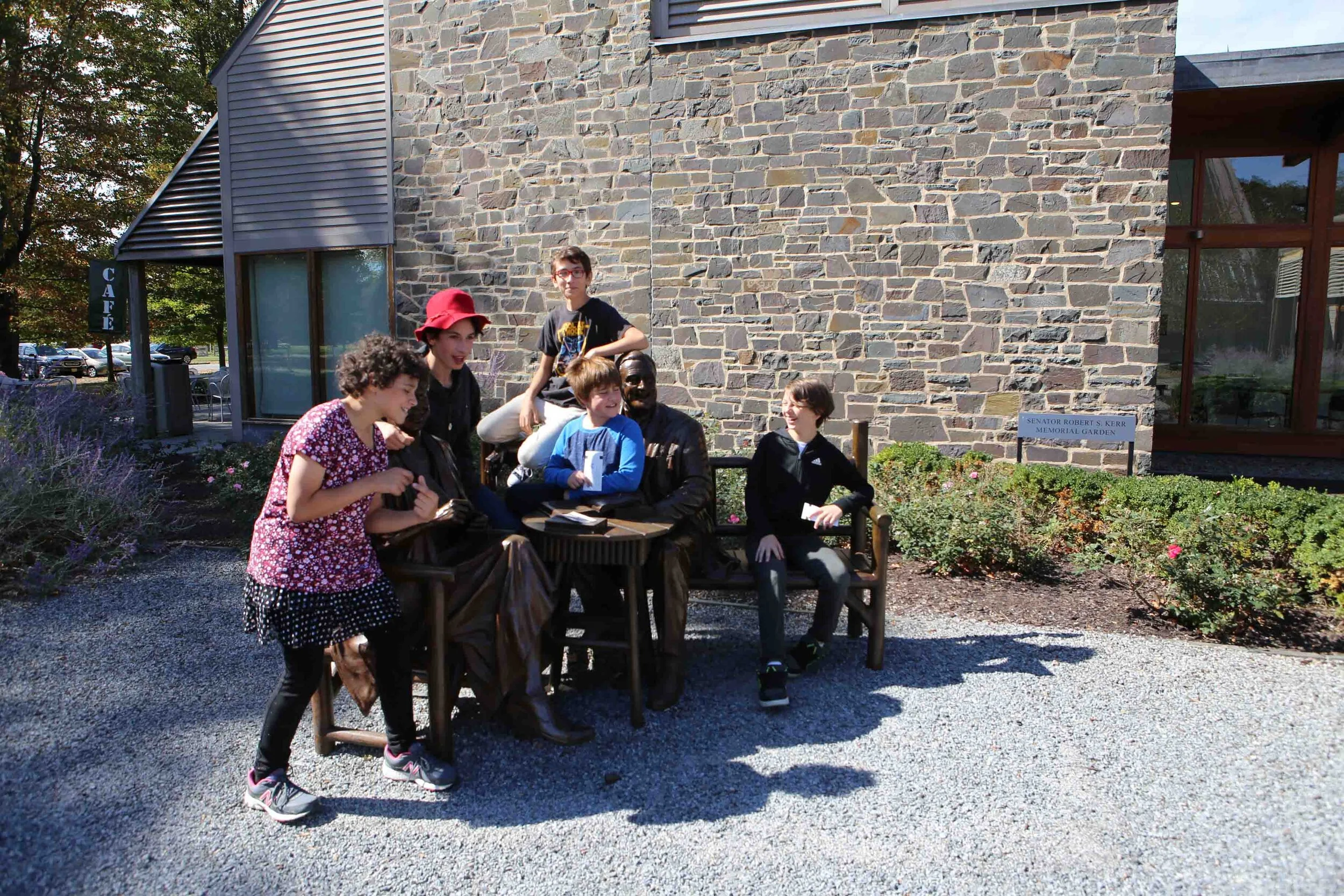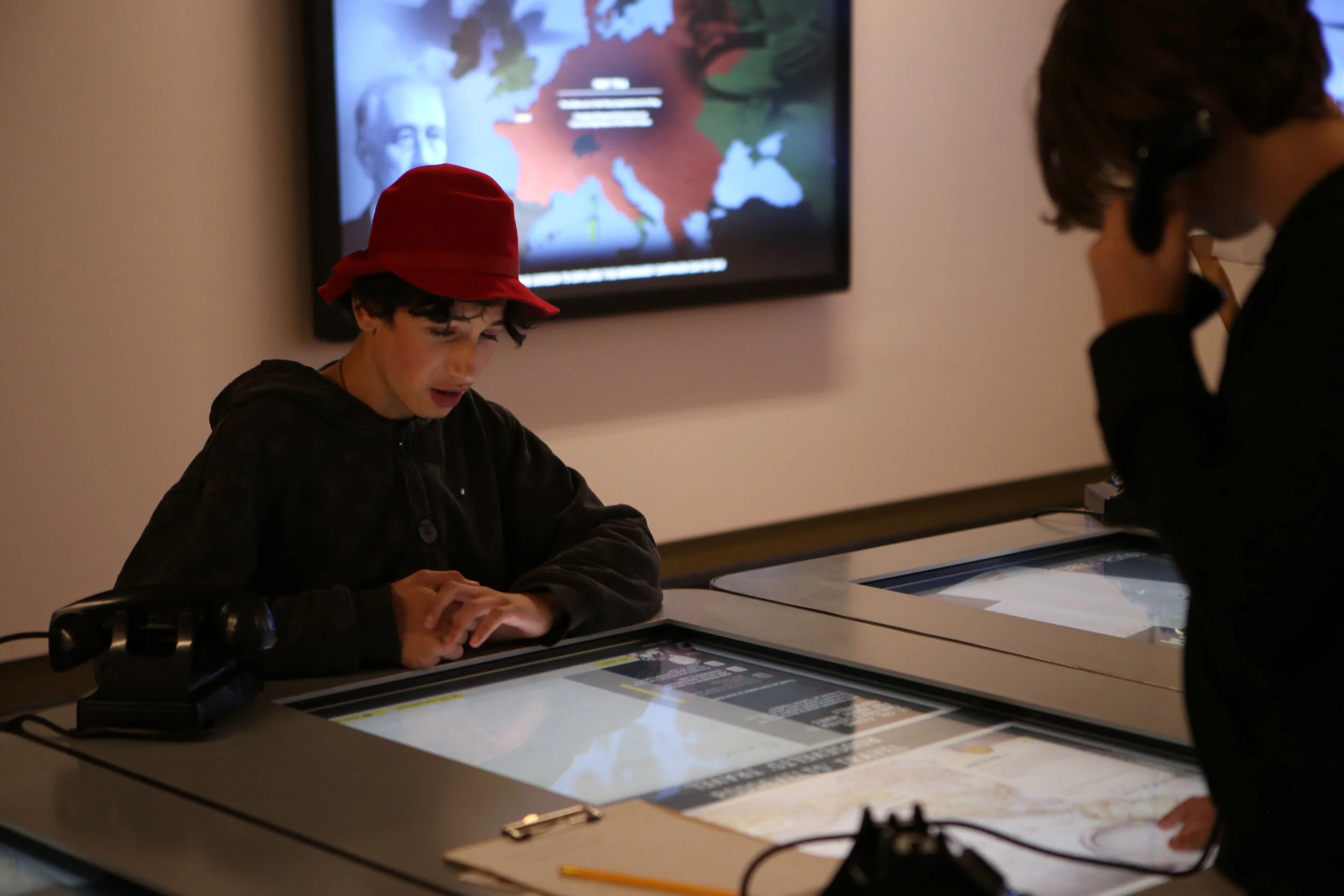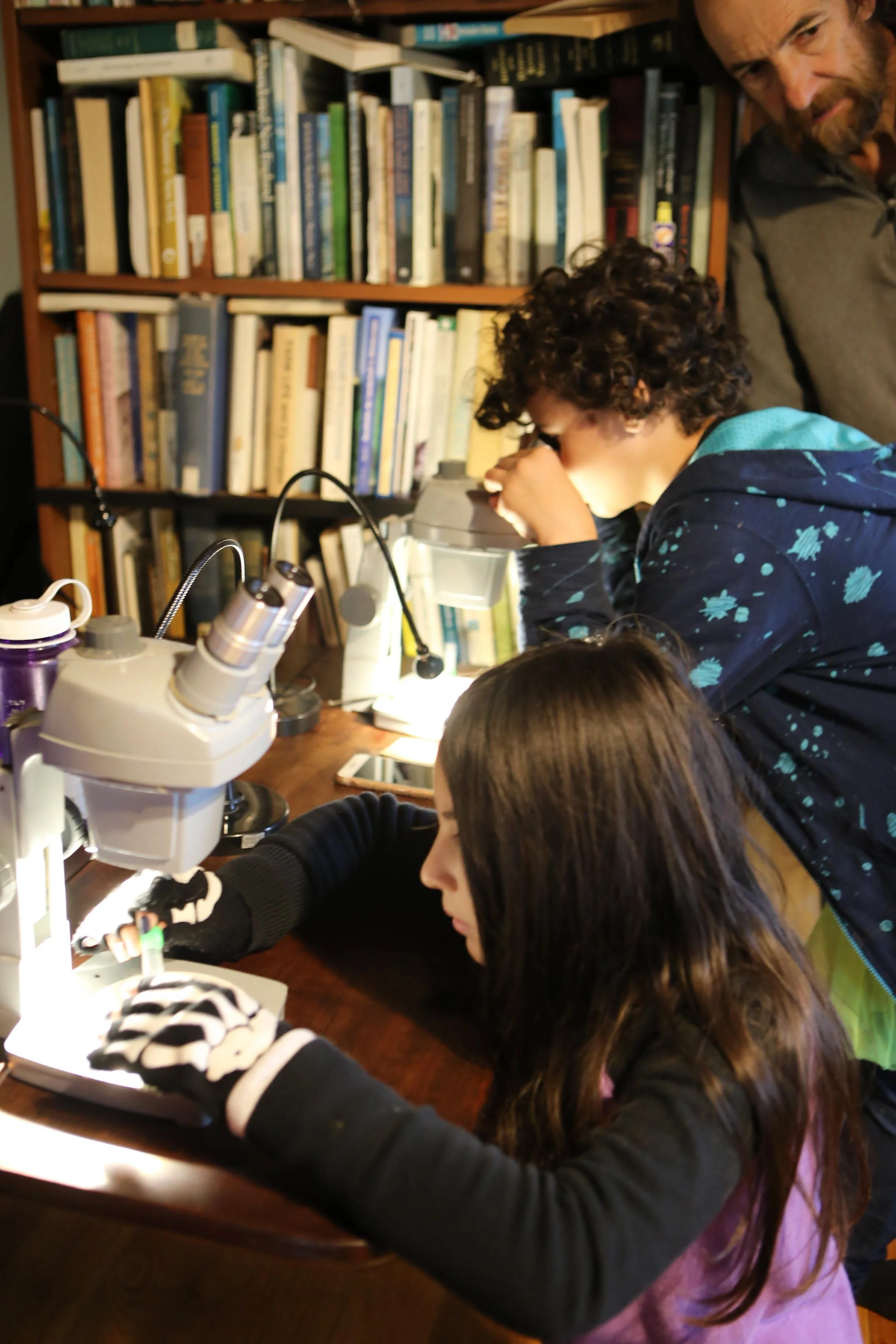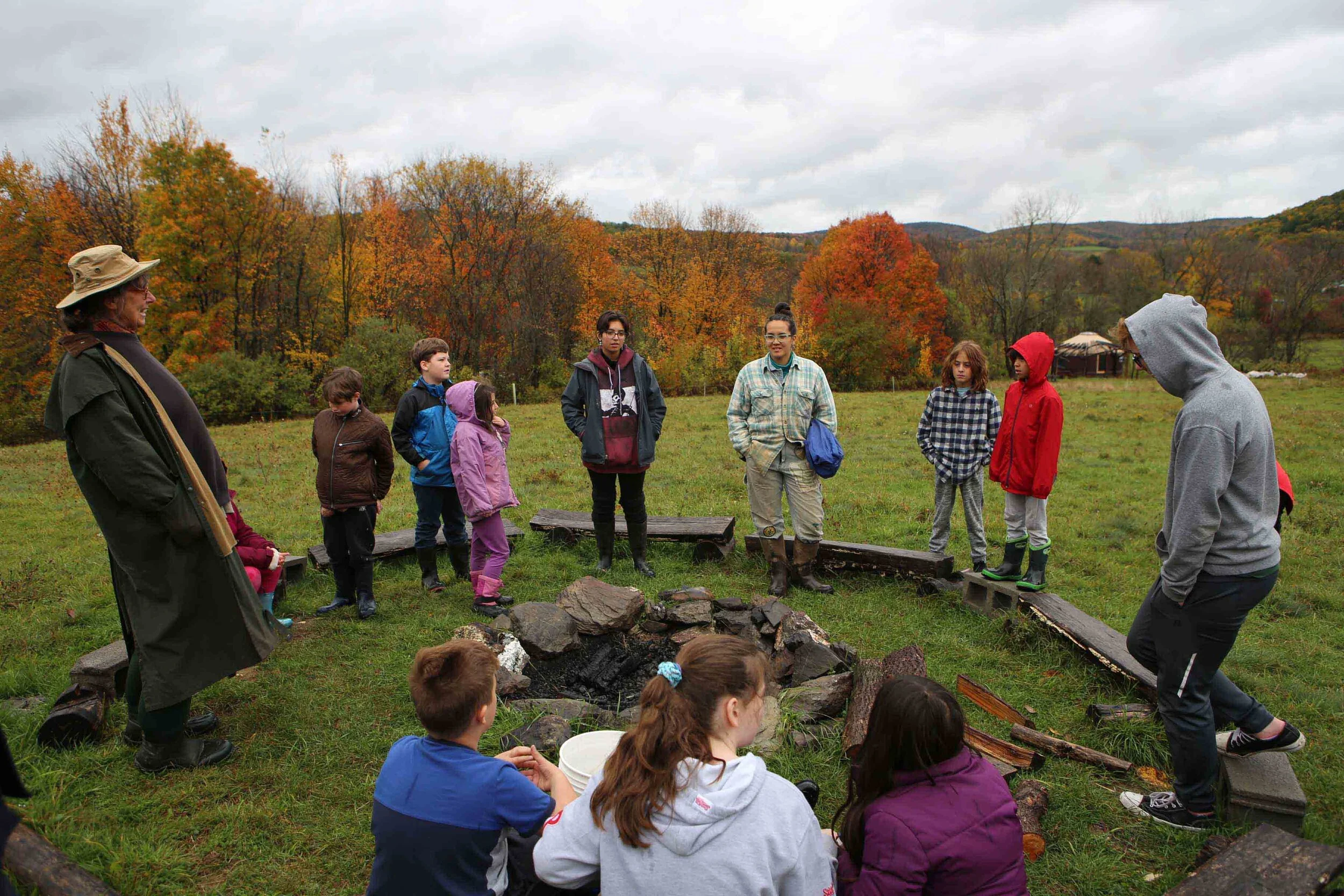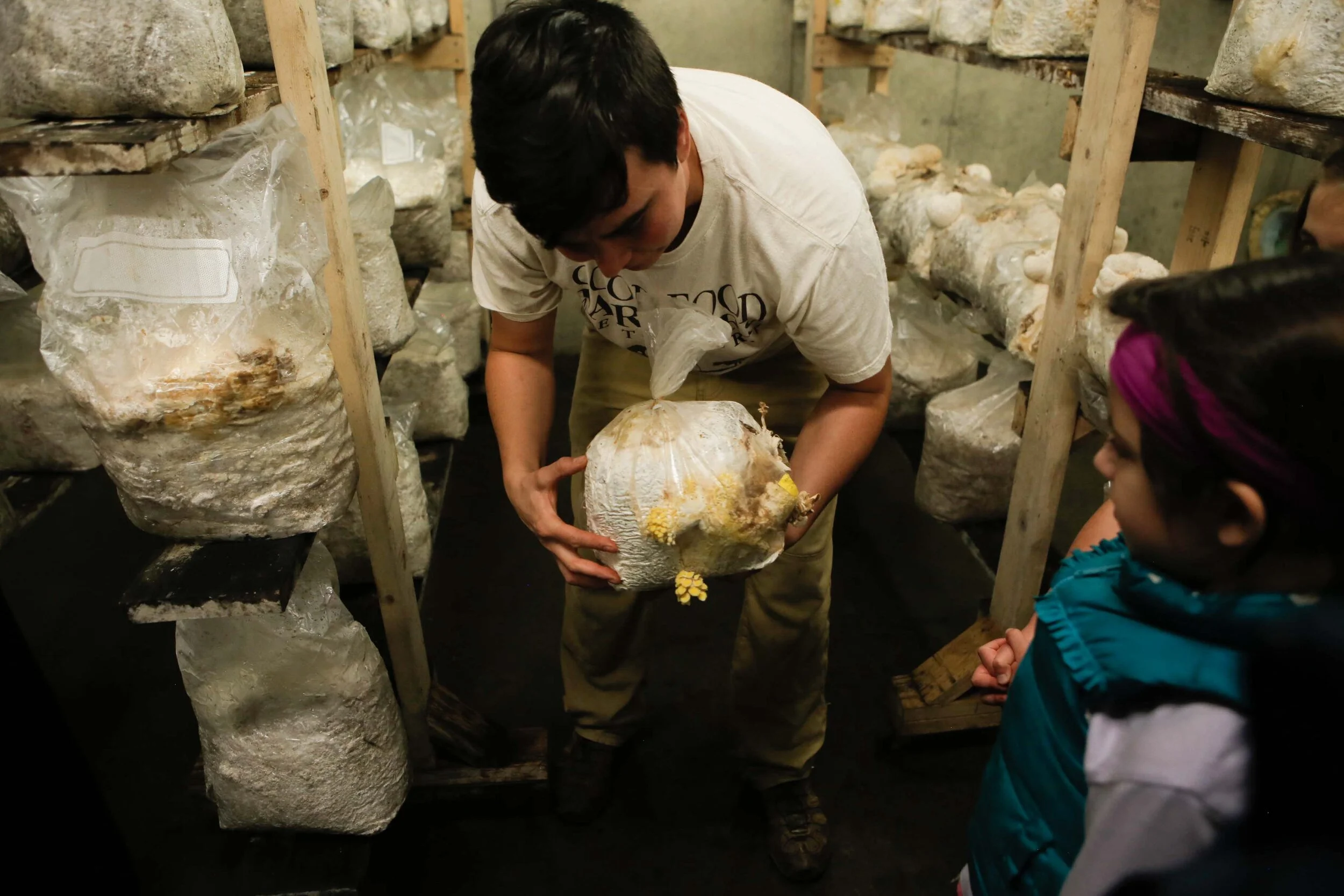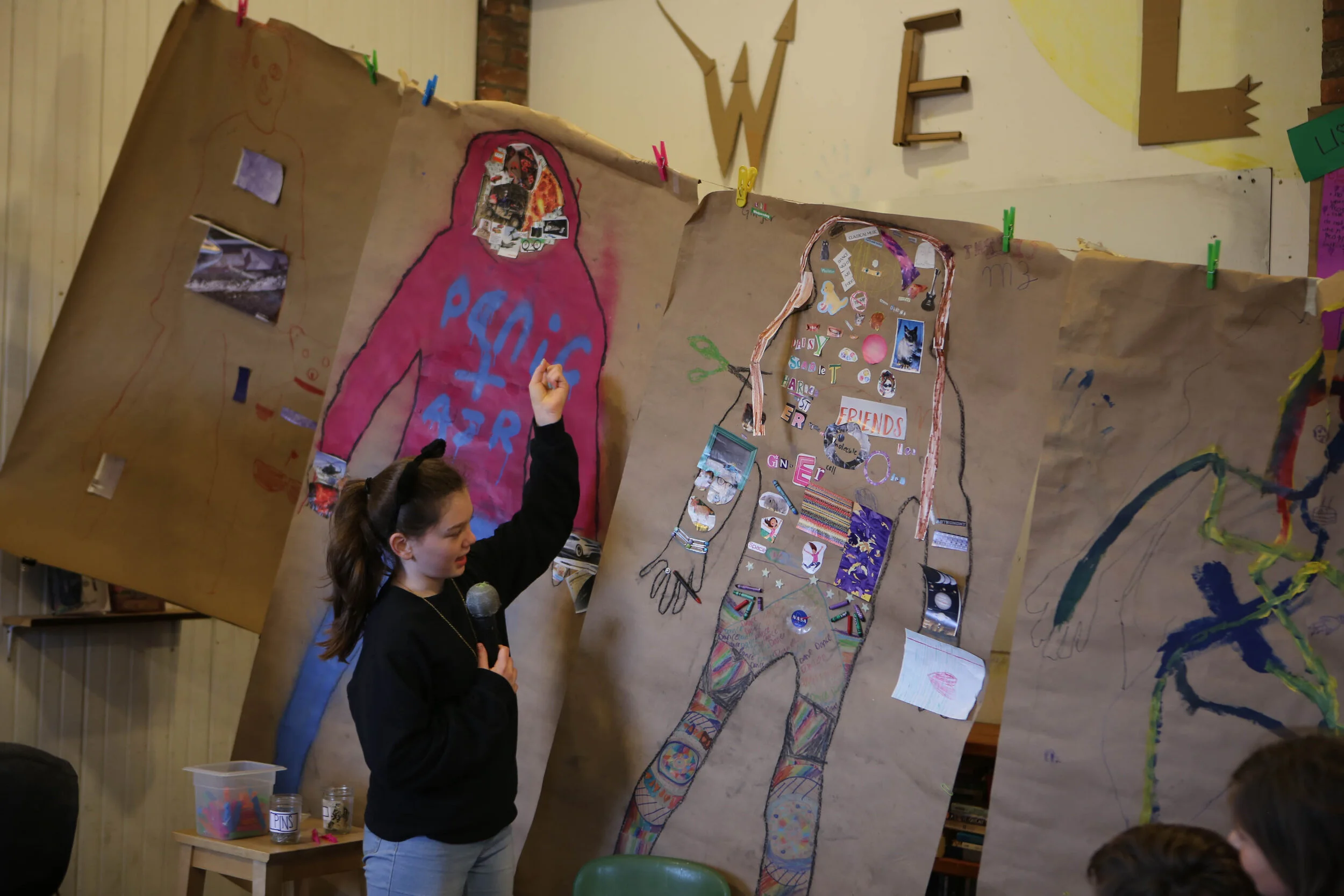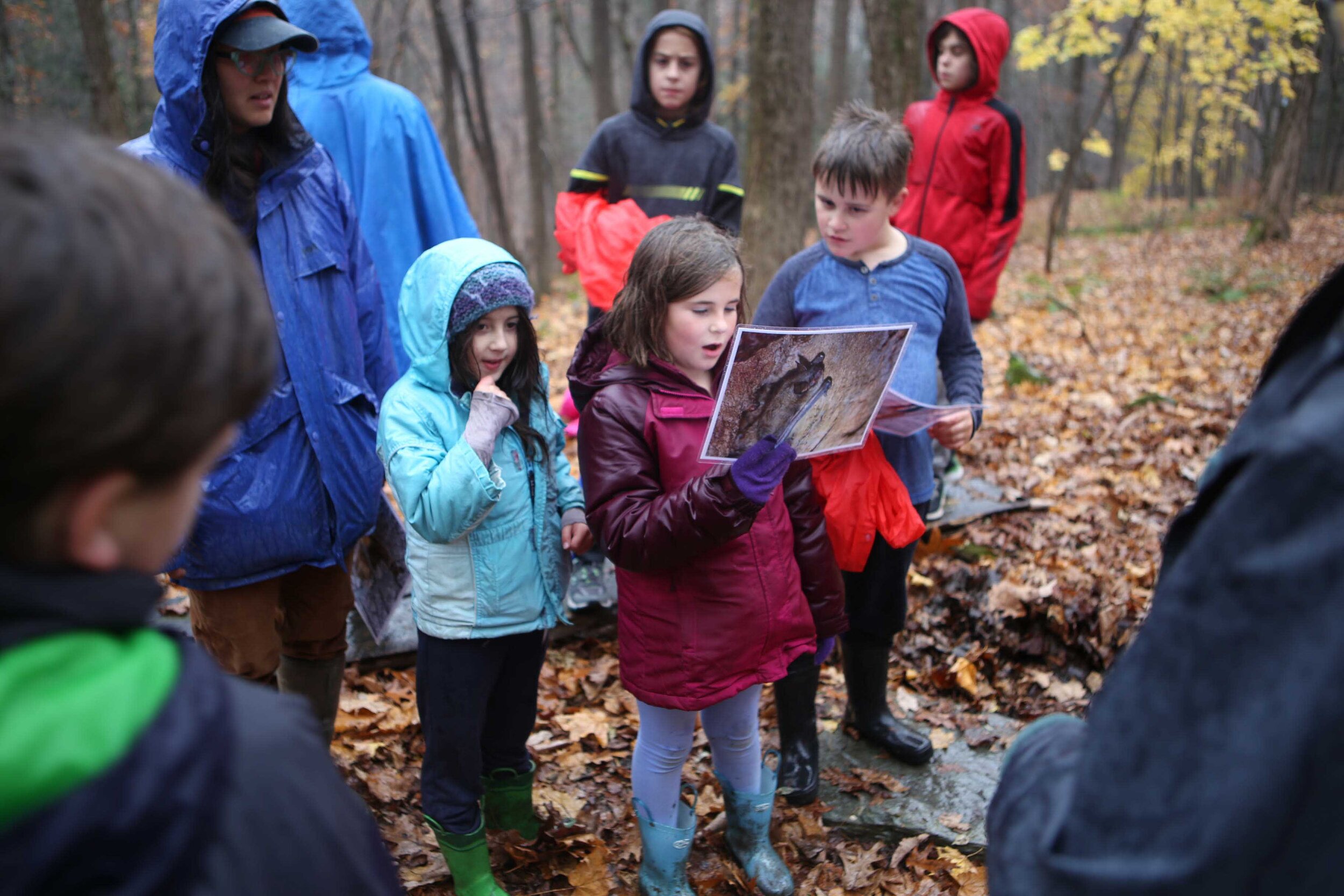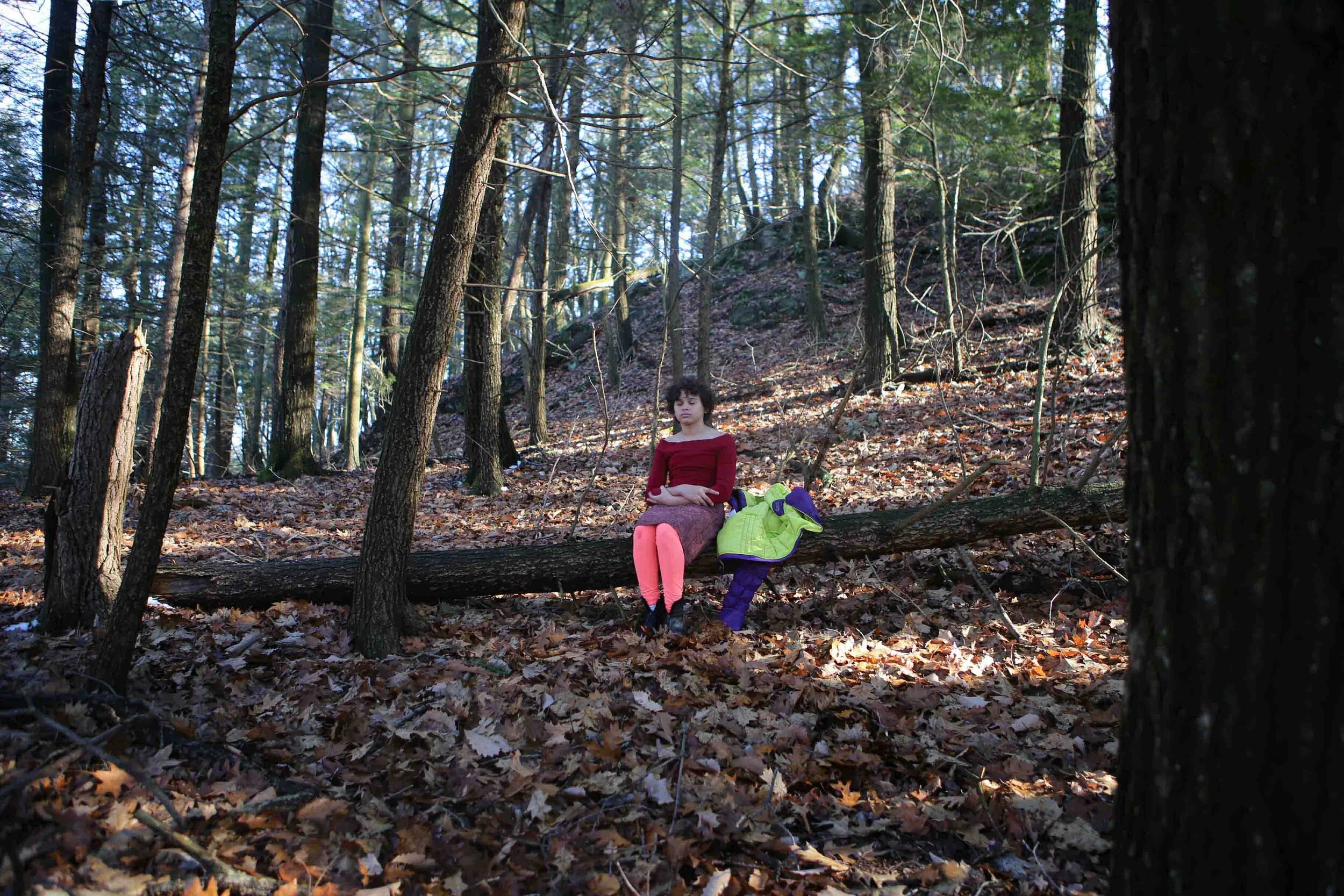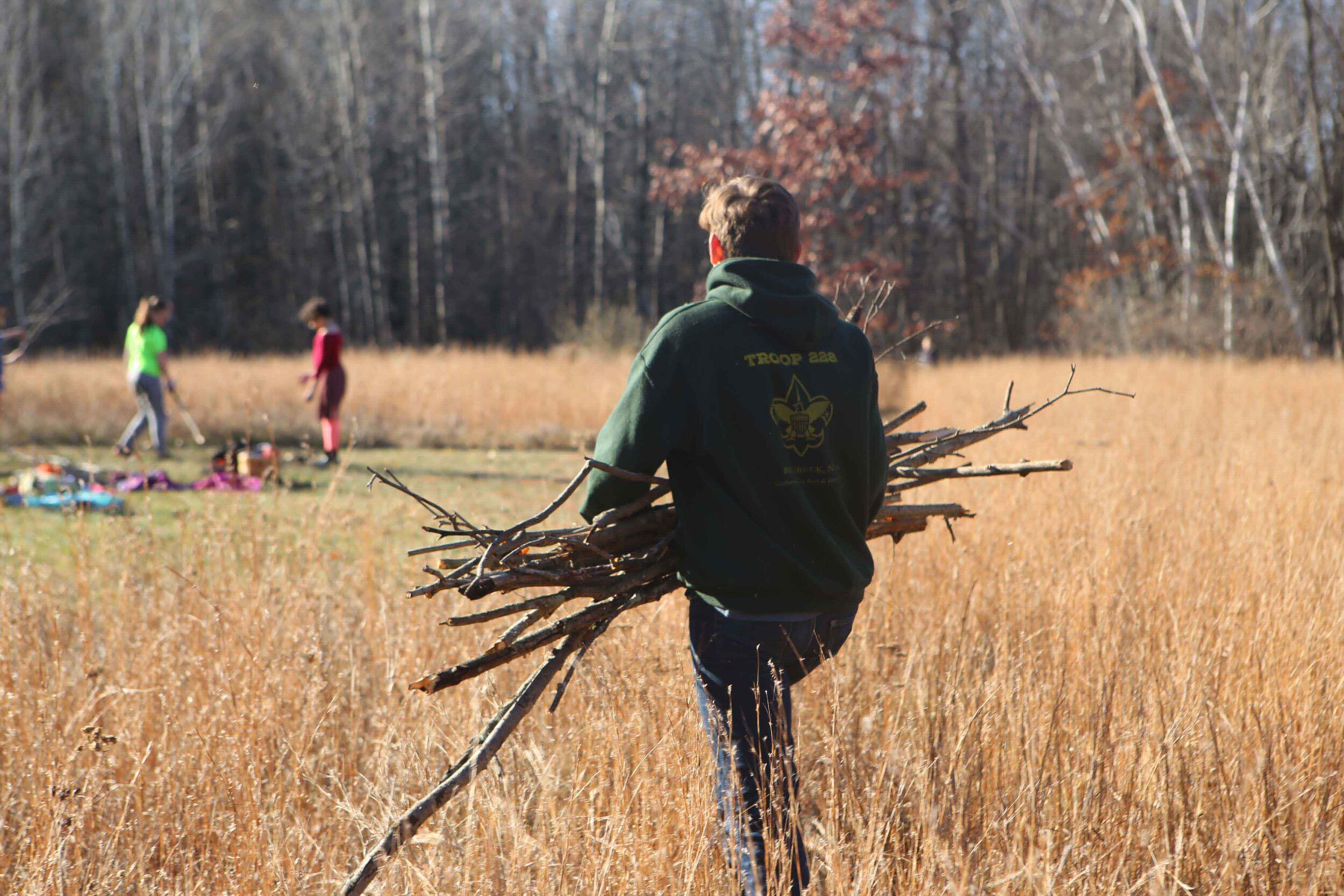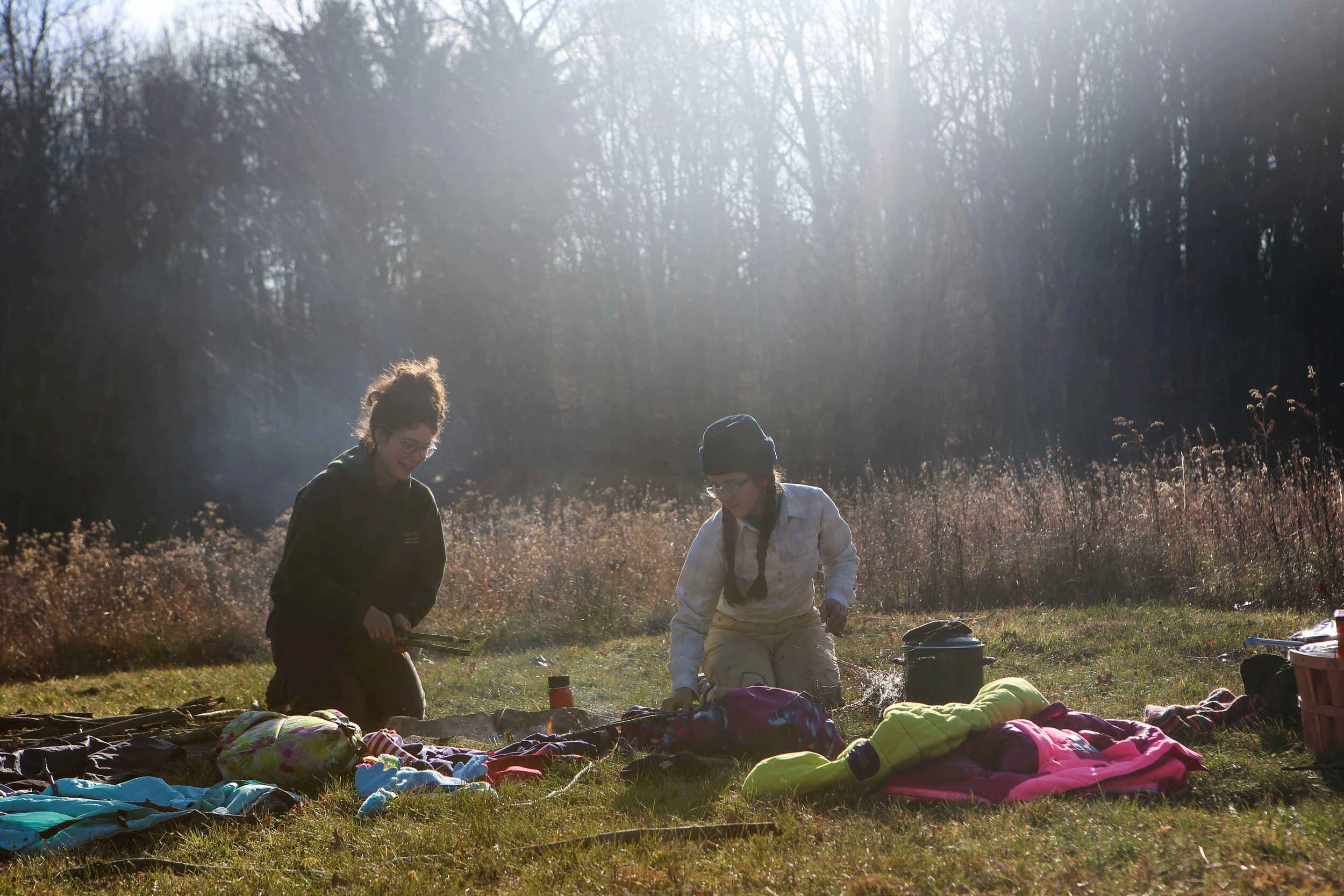FALL 2019 daytime CLASSES
SEPTEMBER 2019 - DECEMBER 2019
civic power
Mondays, 9:30pm - 3:00pm | Ages 8 - 14 | September - December 2019
A crash course on government, politics and people power. With Kieran Riley and Ngonda Badila.
The toxic national political atmosphere around us has reinvigorated student interest in civics and power. In this class students engaged in hands-on and experiential explorations of the different political and economic systems around us, to ask: how does it all work?
We began by exploring our own civic power, learning about youth activists fighting for climate action. Kids can’t vote, but they’re making change in powerful ways around the world. What difference can young people make, and what makes youth voices uniquely powerful?
Over the course of the semester we studied a range of economic and government systems, including socialism, communism, capitalism, dictatorship, oligarchy, monarchy, plutocracy, democracy/republic, parliamentary, and anarchism. Our explorations took many creative forms: students created their own political cartoons to tell stories about current events; participated in political theater, enacting the power structure of a monarchy, the political structure of the Iroquois confederacy, and more; and used illustration and collage to make visual representations of different systems.
Our explorations took us out of the classroom too: we had a scavenger hunt at the Franklin D. Roosevelt Presidential Library and Museum, visited the Norman Rockwell Museum, and traveled to the Capitol Building.
We also examined local power structures, learning about the government system of Hudson, and meeting with Mayor-elect Kamal Johnson and County Supervisor Michael Chameides. To really understand how city politics work, students held their own classroom election, electing a Mayor, Common Council President, and Alderpeople, and role played their own Common Council Meeting.
Students even looked at the power structures and rules inside our own households. How are roles distributed, balanced, and delegated? What rules exist, and how do we feel about them?
A favorite activity throughout the semester was political soccer, where teams represented different political parties, positions represented different branches of power, and each goal represented a bill. At the end-of-semester expo, we hosted an epic soccer game with community members of all ages. Members of the public also voted on our proposed bills: from an increased living wage, to support for homeschool students to participate on public school sports teams, to free tacos for unhoused people in our community.
DETECTIVE ARTS & SCIENCE
Tuesdays, 9:30pm - 3:00pm | Ages 8 - 14 | September - December 2019
Training ground for detectives and mystery sleuths. With Zebi Williams and Heylan Tsumagari.
This semester we entered the world of Detective Arts and Science, from mystery literature to forensic science and deductive reasoning.
We began by exploring the mystery genre, breaking down the ingredients of a good mystery, and discussing questions like: What are the ingredients of a good mystery? What is a crime? We launched our own “Detective Book Club,” reading and discussing mystery classics and recent detective stories.
We studied the basics of Forensic Science, learning how detectives work with scientists to analyze trace evidence and solve crimes, and breaking down the difference between Forensic Anthropology and Forensic Pathology. In our own weekly Forensic Science Labs, we conducted all kinds of experiments: we used bones to calculate height, lifted and graphed our fingerprints, and examined our own clothes for forensic evidence of our daily lives. We experimented with splatter analysis, by looking at the relationship between velocity and height. We practiced collecting hair samples and conducting hair analysis, learned about the different patterns/stitches and burn states of fiber, and used microscopes to analyze magnified photographs of the evidence on our hair, skin, and clothes. We learned to glean information from bite marks, analyzed handwriting and typewriter text, practiced separating colors from ink to determine what type of pen or marker was used to write a note, and discovered the wealth of information detective can learn from shoe prints and tire marks.
We also explored the complexities of how memory can impact detective work, and the many different perspectives, angles, and understandings that can exist around a single event. We discussed the concepts of selective attention, how group thought and collective memory can influence our own rememberings, and considered other problems with “eye witness” accounts.
And we became experts in making and breaking codes: learning the differences between stenography and cryptography, working with famous codes like the Pig Pen Cipher and the Binary Code, and creating our own codes and secret messages with invisible ink.
Of course, throughout the semester we practiced our new tools of forensic science, coding, and deductive reasoning by conducting our own detective work! We learned the art and skills of disguise, learning to change how we walk and speak, and how to disappear in a crowd. And together we solved the mystery of an imagined oil spill on the Hudson, cracked the cases of missing jewels and stolen chocolate, and worked through classic Sherlock Holmes cases and other logic puzzles.
BOTANY & BIOSPHERES
Thursdays, 9:30pm - 3:00pm | Ages 8 - 14 | September - December 2019
A living classroom in action for urban gardeners and scientists. With Nellie Ostow and Heylan Tsumagari.
This semester we dove deep into the study of ecology, botany, and biodiversity.
We began our class with a land acknowledgment: an introduction to the Indigenous history of the land we’re on.
Over the course of the semester, our studies ranged from the micro-level to the macro-level of life. We learned about the building blocks of matter (atoms and molecules) and the building blocks of life (cells and tissues), before diving into a studies of the carbon cycle, the energy cycle, and the basics of plant anatomy. We explored the different layers of life, from individual organisms to species populations to the interconnected communities of fungi.
Our weekly investigations took many creative forms: from garden scavenger hunts to fort-building in the woods; from maintenance of our worm-bin to bug identification walks; from preparing kim-chi to creating mycelium structures with knotted string; from creating our own board games and comics to roasting smores on a fire.
Our studies took us outside the classroom too, as we headed out to our regular sit spot to make weekly observations, and traveled together to the River City Garden, the Farmscape Ecology Program at Hawthorne Valley, to High Falls in Philmont, the Norrie Point Environmental Education Center, the Greenport Conservation Area, and more. Over the course of the semester, students both deepened their understanding of life on earth, while also gaining familiarity in the gardens, woods, and outdoor spaces around us.

